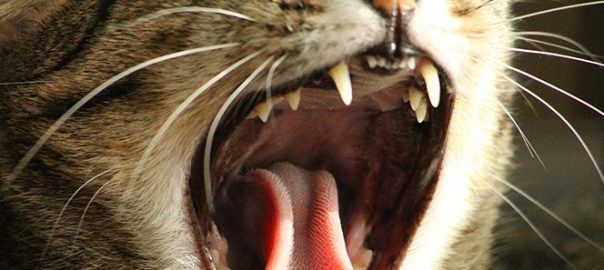Indice
There are a number of diseases that can significantly affect the wellbeing of your kitty, and feline periodontitis is one of them. Periodontitis is the most common oral and dental problem in cats, occurring in 80% of the adult cat population and being the main cause of tooth loss.
The presence of feline periodontitis in the animal can cause from gum recession, nerve damage to tooth loss, in the most advanced cases, it is capable of affecting the heart, kidneys and liver, and cause the death of the individual. For these reasons, treating it from its early stage is paramount, being feline periodontitis: how to prevent it the topic of greatest interest for cat owners in terms of oral health.
What is feline periodontitis?
Feline periodontitis is the inflammation of the supporting structures of the tooth and bone, which combined with gingivitis is called periodontal disease. As mentioned at the beginning, the progression of this disease is silent until it causes noticeable damage to the gums and finally begins to show noticeable symptoms to the person.
The way it develops consists of several phases, first it begins when bacteria form plaque on the teeth.
plaque on the teeth
and then, when combined with saliva, tartar begins to form; once this state is established, bacteria enter under the gums and cause gingivitis, and after a certain time they begin to destroy the supporting tissue of the teeth, this phase being known as periodontitis.
Symptoms of feline periodontitis
In its early stage, periodontitis does not present any external symptoms, and the main indication of its formation is the presence of plaque, tartar or inflamed gums. But once it starts to progress, the following symptoms become visible:
- Bad breath.
- Redness or bleeding of the gums.
- Drooling, which may also be accompanied by blood.
- Constant attempts to touch his mouth or put his foot in his mouth.
- Difficulty chewing.
- Loose or missing teeth.
- Swelling in the mouth or face.
- Recession of the gums.
- Nasal discharge.
Prevention and treatment of feline periodontitis
The treatment of periodontitis in cats varies according to the severity of the disease. In mild cases, cleaning and constant monitoring of the cat’s teeth is sufficient; as the condition worsens, antibiotics, surgery and tooth extraction become necessary. In cases where the bacteria manage to travel to the heart, kidneys or liver, specialized care of these organs is also needed. Analyses and treatments always need to be performed by a veterinarian you trust.
The prevention of feline periodontitis relies entirely on the cat’s oral care, which is the responsibility of the owner. The
care of your cat’s teeth
includes brushing, use of products specifically designed for this purpose such as mouthwash for cats, a diet that helps prevent the formation of plaque or tartar, and regular visits to the veterinarian.
The best way to treat periodontitis is to prevent it, so constant checkups by the person looking for abnormalities in the animal’s mouth and the routine application of dental cleaning is essential for the welfare of the kitty.








